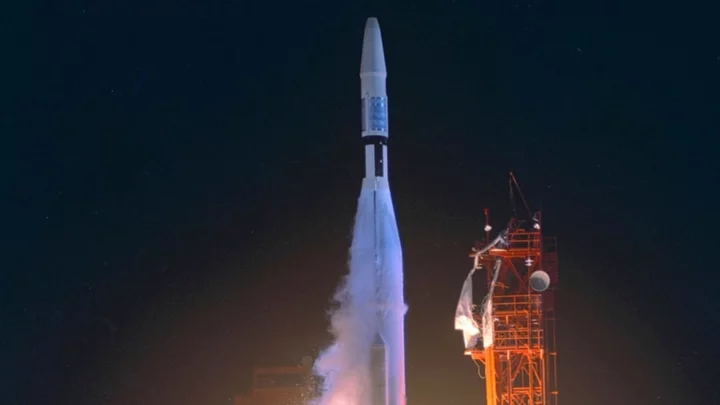On July 22, 1962, NASA launched the Mariner 1 probe, which was intended to fly by Venus and collect data on its temperature and atmosphere. It was intended to be the first interplanetary craft—the first time humans had sent a space probe to another world. Unfortunately, NASA aborted the mission 293 seconds after launch, destroying the probe in the Atlantic. What happened?
First off, a bit of history. Mariner 1 was based on the pre-existing Block 1 craft used in the Ranger program, which was aimed at gathering data on our moon. Those early Ranger probes didn't do so well—both Ranger 1 and Ranger 2 suffered early failures in orbit. Mariner 1 was a modified version of the Ranger design, intended for a much longer mission to another planet. It lacked a camera, but had various radiometers, a cosmic dust detector, and a plasma spectrometer—it would be capable of gathering data about Venus, but not pictures per se.
The two previous Ranger missions had used basically the same launch system, so it was reasonably well-tested. The Ranger probes had made it into orbit, but had been unable to stabilize themselves after that.
Mariner 1 launched on the evening of July 22, 1963. Its Atlas-Agena rocket was aided by two radar systems, designed to track data on velocity (the "Rate System") and distance/angle (the "Track System") and send it to ground-based computers. By combining that data, the computers at Cape Canaveral helped the rocket maintain a trajectory that, when separated, would lead Mariner 1 to Venus.
Part of the problem involved in handling two separate radars was that there was a slight delay—43 milliseconds—between the two radars' data reports. That wasn't a problem by itself. The Cape computer simply had to correct for that difference. But in that correction process, a problem was hiding—a problem that hadn't appeared in either of the previous Ranger launches.
To correct the timing of the data from the Rate System—the radar responsible for measuring velocity of the rocket—the ground computer ran data through a formula. Unfortunately, when that formula had been input into the computer, a crucial element called an overbar was omitted. The overbar indicated that several values in the formula belonged together; leaving it out meant that a slightly different calculation would be made. But that wasn't a problem by itself.
The fate of Mariner 1 was sealed when the Rate System hardware failed on launch. This should not have been a fatal blow, as the Track System was still working, and Ground Control should have been able to compensate. But because that overbar was missing, calculations on the incoming radar data went wonky. The computer incorrectly began compensating for normal movement of the spacecraft, using slightly incorrect math. The craft was moving as normal, but the formula for analyzing that data had a typo—so it began telling Mariner 1 to adjust its trajectory. It was fixing a problem that didn't exist, all because a few symbols in a formula weren't grouped together properly.
Mariner 1's rocket did as it was told, altering its trajectory based on faulty computer instructions. Looking on in horror, the Range Safety Officer at the Cape saw that the Atlas rocket was now headed for a crash-landing, potentially either in shipping lanes or inhabited areas of Earth. It was 293 seconds after launch, and the rocket was about to separate from the probe.
With just 6 seconds remaining before the Mariner 1 probe was scheduled to separate (and ground control would be lost), that officer made the right call—he sent the destruct command, ditching Mariner I in an unpopulated area of the Atlantic.
The incident was one of many early space launch failures, but what made it so notable was the frenzy of reporting about it, mostly centered on what writer Arthur C. Clarke called "the most expensive hyphen in history." The New York Times incorrectly reported that the overbar was a "hyphen" (a reasonable mistake, given that they are both printed horizontal lines) but correctly reported that this programming error, when coupled with the hardware failure of the Rate System, caused the failure. The bug was identified and fixed rapidly, though the failed launch cost $18,500,000 in 1962 dollars—north of $150 million today.
Fortunately for NASA, Mariner 2 was waiting in the wings. An identical craft, it launched just five weeks later on August 27, 1962. And, without the bug and the radar hardware failure, it worked as planned, reaching Venus and becoming the first interplanetary spacecraft in history. It returned valuable data about the temperature and atmosphere of Venus, as well as recording solar wind and interplanetary dust data along the way. There would be 10 Mariner missions in all [PDF], with Mariner 1, 3, and 8 suffering losses during launch.
For further reading, consult this Ars Technica discussion, which includes valuable quotes from Paul E. Ceruzzi's book Beyond The Limits—Flight Enters the Computer Age.
This article was originally published on www.mentalfloss.com as On This Day in 1962, NASA Launched and Destroyed Mariner 1.









